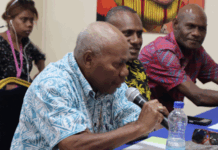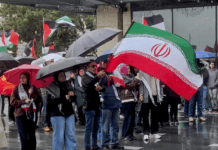
By Pacific Media Watch
The Arab Spring opened the door to some greater freedoms in Middle East news media and some social change in spite of reverses from the political upheaval in the region.
In a study of four countries in the Middle East in the period immediately following the Arab Spring in 2010-2012 — Egypt, Libya, Tunisia and Yemen, Majid A. Al Zowaimil argues the scrutiny of the media in terms of government power structures was a measure of some success for the revolution.
Al Zowaimil graduated yesterday with his Master of Communication Studies thesis, entitled After the Arab Spring: An analysis of the future of Journalism in the Middle East, which was completed under the umbrella of the Pacific Media Centre in AUT’s School of Communication Studies.
“The findings of this study not only examine the state of journalism within a shifting social and political climate in the Middle East, but also question how we measure social change with regards to freedom of expression and the presence of democracy,” he says.
“Examining the treatment of journalism prior to the Arab uprisings suggested the urgent need for restructuring systems of power that governed the lives of citizens living in Egypt, Libya, Tunisia and Yemen.
“Prior to the uprisings, restrictions on journalism deliberately limited communication between state governance and the civilian population,” Al Zowaimil wrote.
Journalism in the Middle East had long suffered from the effect of autocratic and corrupt political regimes, which saw control of the media as being vital to their continued ability to exert power over their nations.
Significant factors
However, following the Arab Spring uprisings, there had been a marked increase in the number of governments willing to give their press freedom to report, even to the point of criticising the actions of the current government.
“This has removed one of the most significant factors influencing the quality and objectivity of journalists in the Middle East.”
“However, there are still other significant issues which remain, including the volatile political situation, the subtle influence of political parties or what is referred to as ‘deep state’, and the level of conflict which exists in the region as a whole.”
Al Zowaimil interviewed 11 prominent journalists from the four Middle East and North Africa (MENA) member countries.
External reports from international organisations such as Freedom House, Committee to Protect Journalists (CPJ), and the Freedom Online Coalition (FOC) were also used to judge participants’ commentaries in the evidence-based research.
Findings showed that considerable challenges still remain even after the end of the Arab Spring events.
Al Zowaimil writes that it was clear that the Arab Spring altered the social climate of all of these nations in one way or another, however the positive impact this may have had on press freedom is inconsistent, when comparing all four nations.
Political power fluctuations, deep state, absence of government, and civil institutions’ role have contributed to empowering or denying journalism and press freedom in Middle East since the end of the uprisings.
Measuring shifts that have occurred in media, as a civil institution after a social revolution, would be a crucial factor on deciding whether such revolution has achieved its ultimate goals, argues Al Zowaimil.











































